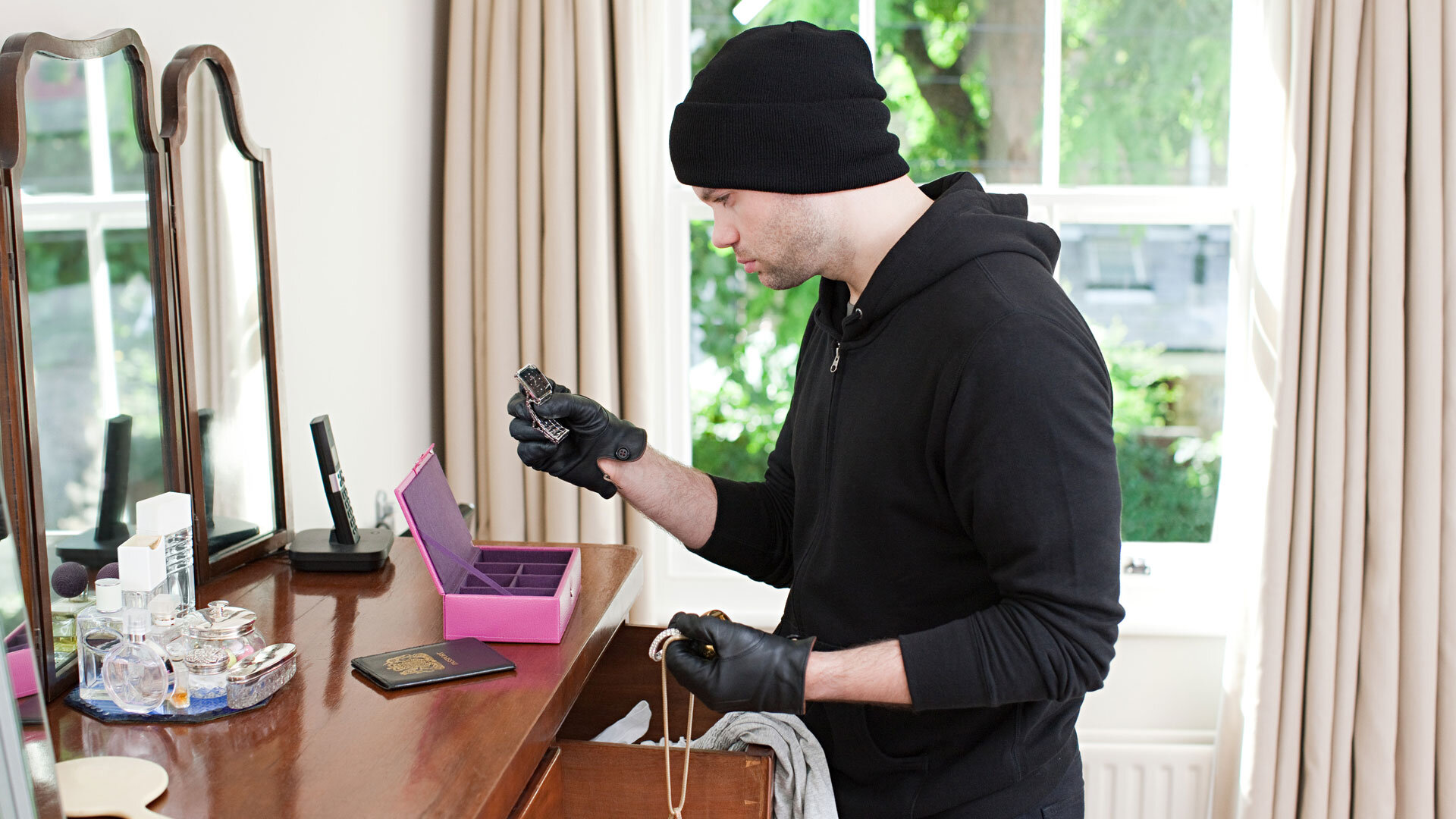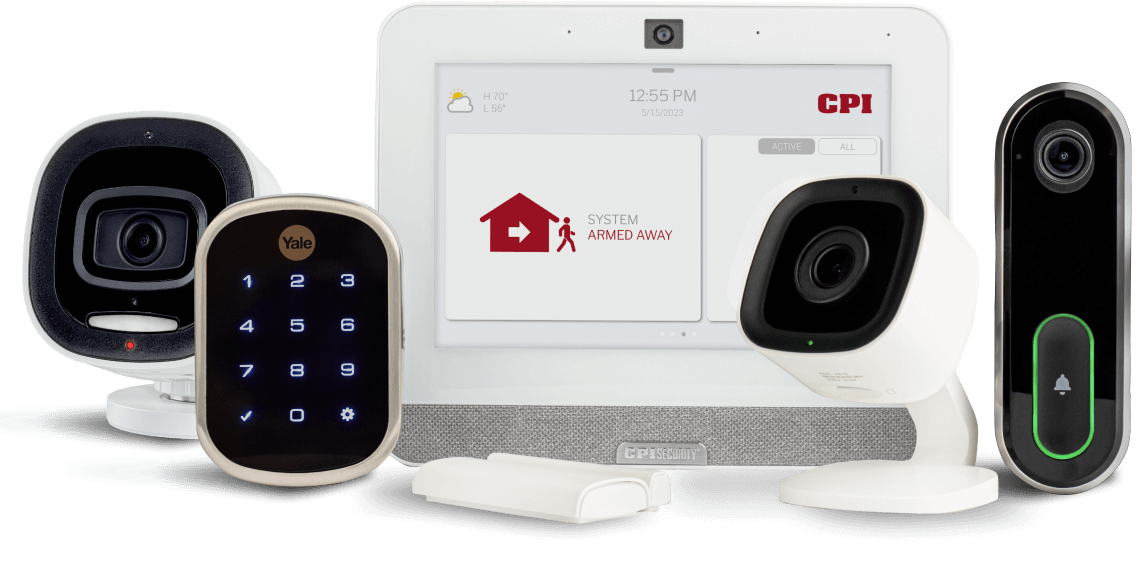Did you know that, according to the FBI, there were more than 1.1 million burglaries in 2019? Around 63% of these burglaries were of residential properties. Additionally, the FBI reports that in total burglary victims suffered an estimated $3 billion in property losses in 2019, with the average dollar loss per burglary offense being $2,661.
This means that it’s critical for homeowners to not just try to prevent burglary of their home, but also know what will happen in the event of theft. Below we’ve summarized everything you need to know about theft insurance and what homeowners insurance covers in relation to theft and burglary.
Does Homeowners Insurance Cover Theft?
First, let’s cover the most basic questions: does homeowners insurance cover theft? Generally speaking, yes, homeowners insurance does cover theft. However, the specifics of what is covered and how much coverage you have depends on your homeowners insurance policy. Loss due to theft is usually covered under your personal property coverage, and damage to your property from forced entry would be covered under your dwelling coverage.
If someone breaks into your home, be sure to call the police right away. It’s not just a safety issue; your insurance will need a copy of a police report when you file your claim.
What Does Homeowners Insurance Cover?
To know exactly what your homeowners insurance does and does not cover, you’ll need to look at your specific policy. However, there are many different types of coverage typically included in a homeowners insurance policy.
Dwelling insurance covers your actual home or dwelling, in case your home is damaged by flood, fire, or natural disaster. Any damage to your property from forced entry, such as broken windows or damaged doors, would usually be covered by dwelling insurance. Detached structures, such as garages and sheds, are covered here as well, but often only at a certain percentage of the total dwelling coverage on your home.
Personal liability coverage covers expenses incurred if a visitor is injured on your property or if their personal property is stolen from your home due to your negligence. Additional living expenses coverage is for temporary living expenses incurred if you are displaced from your home because of damage due to a covered event.
Personal property coverage is usually the most important type of coverage in cases of theft and is sometimes called theft insurance. This type of coverage covers your belongings in the event of a covered loss. Furniture, electronics, clothing, and valuables all fall into this category, and this coverage applies to theft and damage at home or anywhere else. This means that if your property is stolen while you are traveling or elsewhere, you can still file a claim with your homeowners insurance. Trees, shrubs, and landscaping are often covered under this as well, but typically only up to a certain percentage of your overall coverage.
To make sure that your belongings are covered in the case of theft or any other covered event, it’s important to have an up-to-date home inventory. You can start with a video walk-through of your home, noting the contents of each drawer, cabinet, and closet. Then, create a more detailed list of your most expensive items, noting serial numbers of all electronics and appliances, and a general number of items in each category (for example: 10 shirts, 30 books, 8 dinner plates, etc). Don’t forget to include items in your attic, basement, garage, shed, and any off-site storage locations in your inventory.
What Does Homeowners Insurance Not Cover?
While your lost property should be covered by your homeowners insurance in the event of theft, that doesn’t mean homeowners insurance will automatically cover the cost of all your missing items in full. It’s important to understand exactly what limits your insurance policy has, and what your homeowners insurance does not cover. If it’s been a while since you purchased your policy, work with your insurance agent to make sure that all your belongings are covered.
According to the Insurance Information Institute, most homeowners insurance policies provide personal property coverage at 50-70% of the total amount of insurance on your home. Additionally, some types of more valuable property may have a low cap, at just a few grand. In this case, you’ll want to purchase some supplemental insurance to make sure your valuables are covered.
Make sure you know whether your policy’s coverage is based on actual cost value or replacement cost value. Actual cost value reflects the depreciation of an item’s value, whereas replacement cost value accounts for how much it would cost to replace the item today. You can talk with your insurance agent to determine how your policy values items and which type of valuation makes the most sense for you.
Additional Homeowners Insurance FAQs
Read on to get answers to more frequently asked questions about theft and homeowners insurance.
Does home insurance cover car break-ins?
While stolen cars and permanently installed car equipment, such as audio equipment, are covered by your car insurance, your homeowners insurance should cover items stolen from your car.
Does homeowners insurance cover stolen cash?
Homeowners insurance does cover stolen cash, but usually only up to around $200 dollars. For this reason, it’s smart to keep your cash in a secure, fire-proof location, such as a bank account or safe deposit box, rather than in a shoebox or under the mattress.
What insurance covers robbery?
While it is a bit different than theft by burglary, your homeowners insurance should offer similar coverage for robbery. Stolen items and small amounts of stolen cash would be covered under your personal property coverage.
Protect Your Home & Your Belongings from Theft
Looking to take the next step to protect your home and your belongings from burglary and theft? Installing a home security system is a proactive measure you can take to keep your home safe, and it can even reduce your homeowners insurance costs. To learn more about protecting your home from burglary and theft with the help of a security system from CPI Security, get in touch with an expert today.




